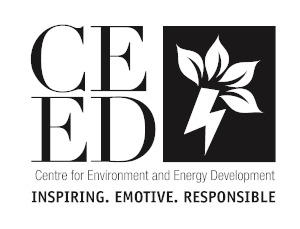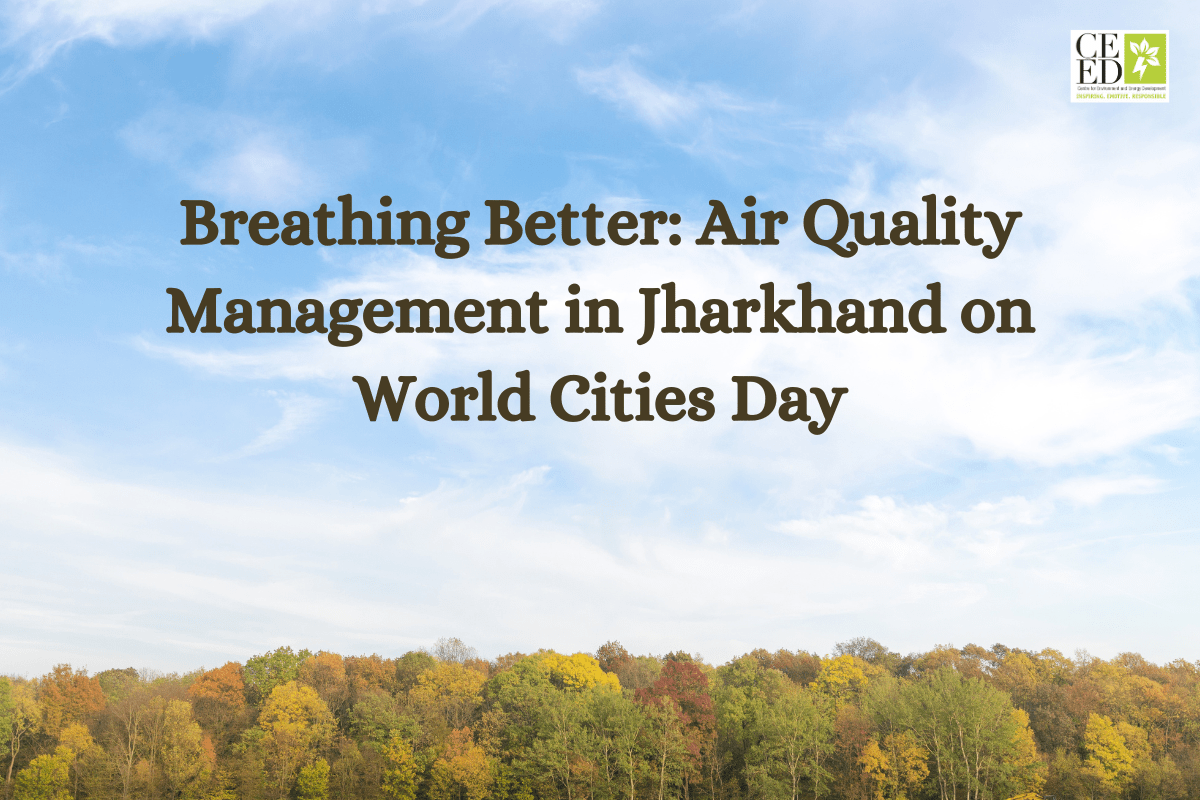Varsha Goswami |
World Cities Day signifies the endeavour to create improved urban environments and enhance the quality of life within cities. The official objective of Sustainable Development Goal 11 is to promote cities that are inclusive, secure, adaptable, and environmentally sustainable. One of the targets of SDG 11 is the reduction of the environmental impacts of cities and to provide access to safe and inclusive green and public spaces.
Cities globally encompass only 3 percent of the Earth’s land, yet they are responsible for 60–80 percent of energy consumption and a significant 75 percent of carbon emissions. Since the inaugural release of STOTEN in 1972, the global human population has nearly doubled, growing from 3.8 billion to over 6.6 billion individuals. Projections indicate that by 2030, urban areas will be home to more than two-thirds of the world’s population, as per the Population Division of the United Nations Secretariat’s Department of Economic and Social Affairs in 2007. Unprecedented urban development rates are placing immense pressure on the air quality at local, regional, and global levels, as shown in Figure 1. These statistics underscore the substantial challenges cities face in ensuring clean and sustainable air quality, especially as they confront growing future demands.
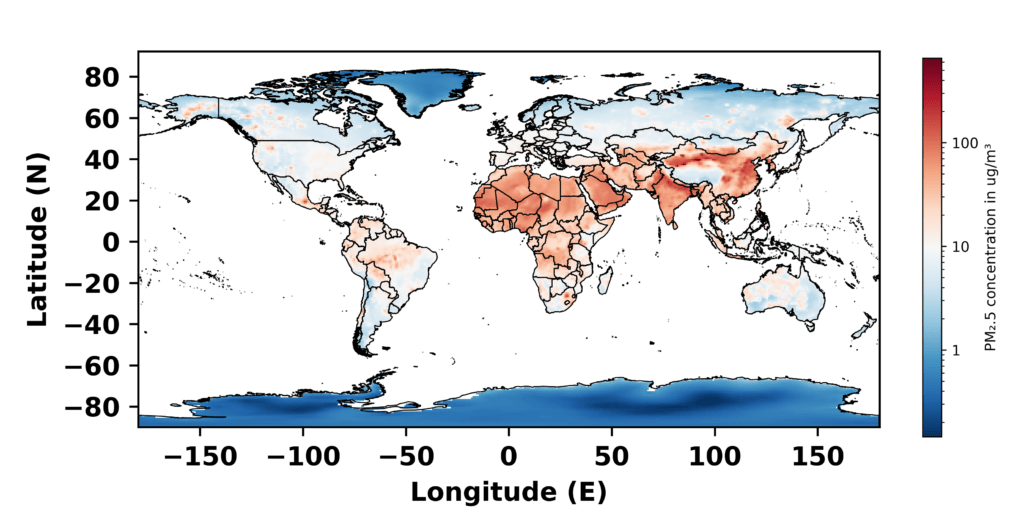
Fig: 1 Particulate Matter (PM2.5) concentration around the world (Source: CAMS Data)
Urban Growth and Its Effect on Air Quality in India
India’s rapid urbanization has led to a significant reduction in green spaces, increasing cities’ vulnerability to climate change. From 2001 to 2011, the urban population grew by 31.8%, substantially outpacing the national growth rate of 17.6%, and projections suggest India will host approximately 14% of the global urban population by 2025 (McKinsey & Company). Over 35 Indian cities now have populations exceeding one million (Ministry of Home Affairs, 2011), with megacities like Delhi (32.94 million), Mumbai (21.3 million), and Kolkata (15.33 million) seeing exponential growth. This expansion, fueled by economic development and migration, has increased urban demand and environmental stress. In Figure 2, a global comparison shows that India’s urbanization rate, although rising, is still below the global average, as depicted in recent data that highlights a steady increase in the urban share of the population from 1960 to 2022.
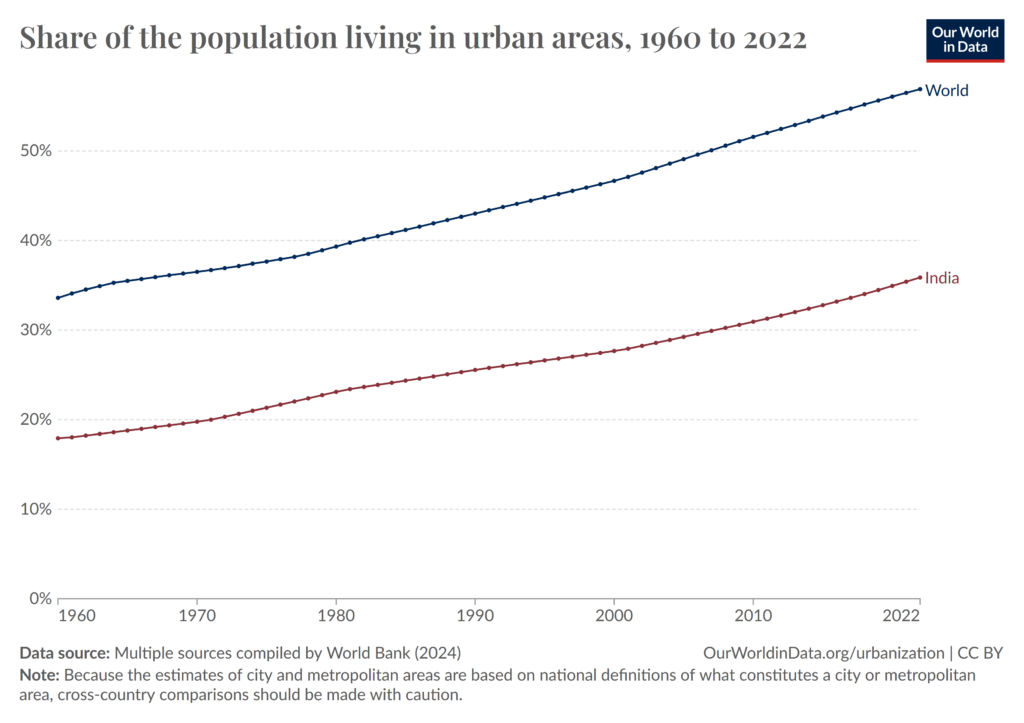
Fig:2 Population living in urban areas, World versus India (Source: Our World Data)
Alongside urban growth, rising living standards have driven an increase in vehicle ownership, with motor vehicle numbers nearly doubling from 72.7 million in 2004 to 141.8 million in 2011. This surge, combined with coal combustion for power, industrial emissions, construction, and crop residue burning, has intensified India’s air pollution crisis. Key pollution sources include ambient particulate matter, household air pollution, and tropospheric ozone, all contributing significantly to India’s high pollution levels (Parikh et al., 2009). Figure 3 illustrates PM2.5 concentrations over India in December 2016.
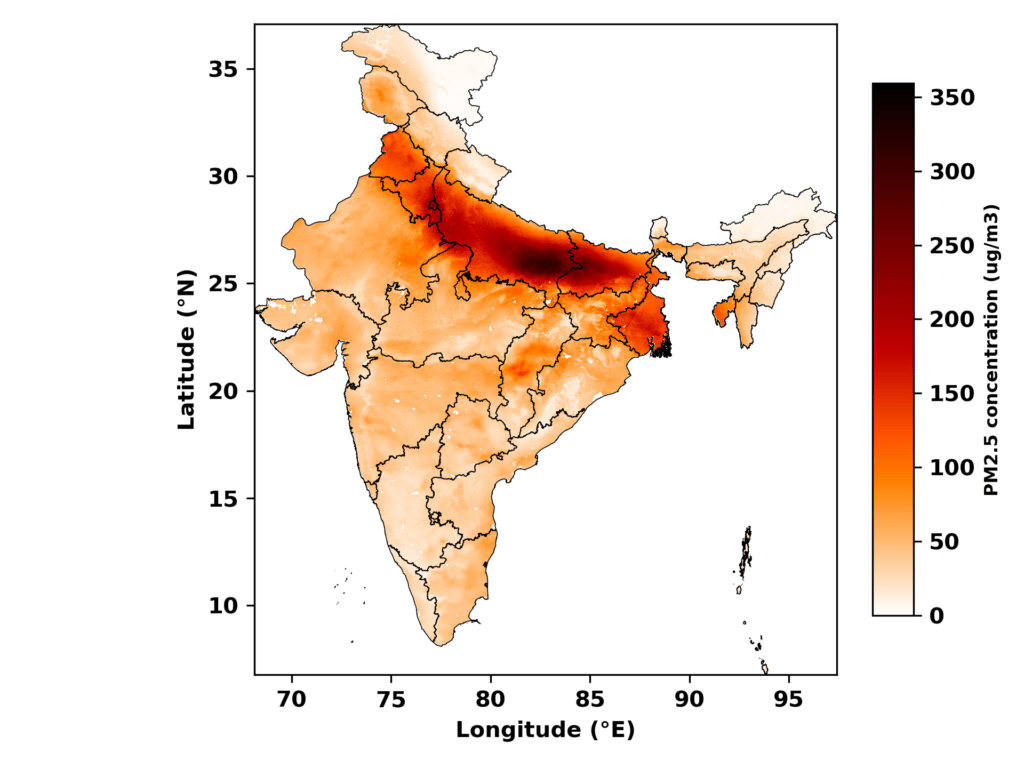
Figure 3: PM2.5 spatial distribution over India (December 2016 ) (Source: WU)
The health consequences are substantial: air pollution is one of India’s leading public health risks, estimated to have caused over 1.67 million premature deaths in 2019, accounting for 18% of total fatalities and 11.5% of disability-adjusted life years lost. Health impacts range from respiratory and cognitive impairments in children to increased risks of diabetes, lung cancer, and cardiovascular diseases in adults. Nearly 76% of Indians are exposed to air quality below national standards, underscoring the critical need to address these air quality challenges in tandem with urban growth.
Assessing the Impact of Urbanization on Air Quality in Jharkhand
Jharkhand’s expanding economy has driven urbanization as more people seek opportunities and improved living standards in its cities. This has led to the growth and development of urban areas in the state. In fact, urbanization in Jharkhand increased from 29% in the previous decade to approximately 33% in 2011. As a result, the total urban population in the state has reached around 8 million. The state’s economic prospects are booming, attracting people from nearby rural areas and beyond. This influx is reshaping land use, socio-economic factors, and demographics in the region. However, unchecked urban growth can strain resources and harm the city’s environment. The major pollutants that are emitted via different pollutant sources are particulate matter (PM), sulphur dioxide, nitrogen dioxide, and heavy metals. These pollutants not only degrade the quality of air but also have a huge impact on human health (Singh et al., 1991). Air pollution can have a substantial economic impact, including increased healthcare expenditures, decreased worker productivity owing to illness, and infrastructure and agricultural damage. Furthermore, air pollution disproportionately affects vulnerable communities in Jharkhand, particularly low-income populations and tribal communities, resulting in social and environmental inequities.
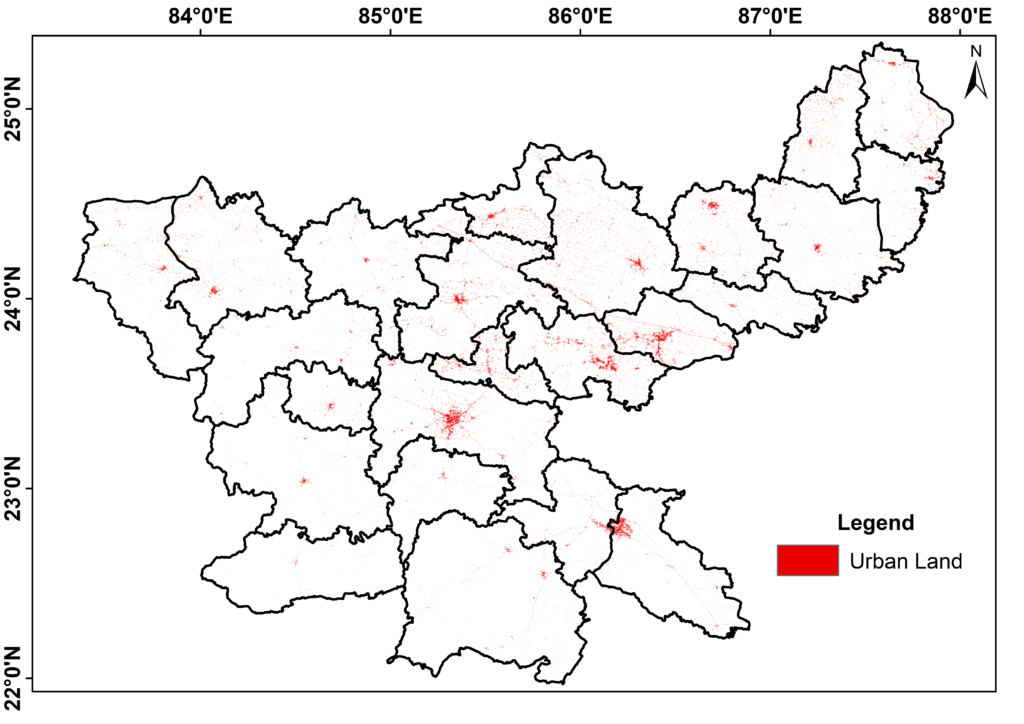
Fig: 3 Urban Land Cover over Jharkhand (Source: Copernicus-ESA-Land Cover,2021)
According to data from the Central Pollution Control Board (CPCB) , several cities in Jharkhand have recorded high levels of particulate matter (PM) and other pollutants. PM2.5 and PM10 are fine airborne particles that can easily penetrate the lungs, posing significant respiratory health risks. These particles are released from sources such as vehicles, industries, and construction activities. The World Health Organization (WHO) has established guidelines for acceptable levels of PM2.5 and PM10; however, many areas in Jharkhand exceed these limits. Figure 4 shows the PM2.5 distribution across Jharkhand in December 2016, highlighting identifiable pollution hotspots.
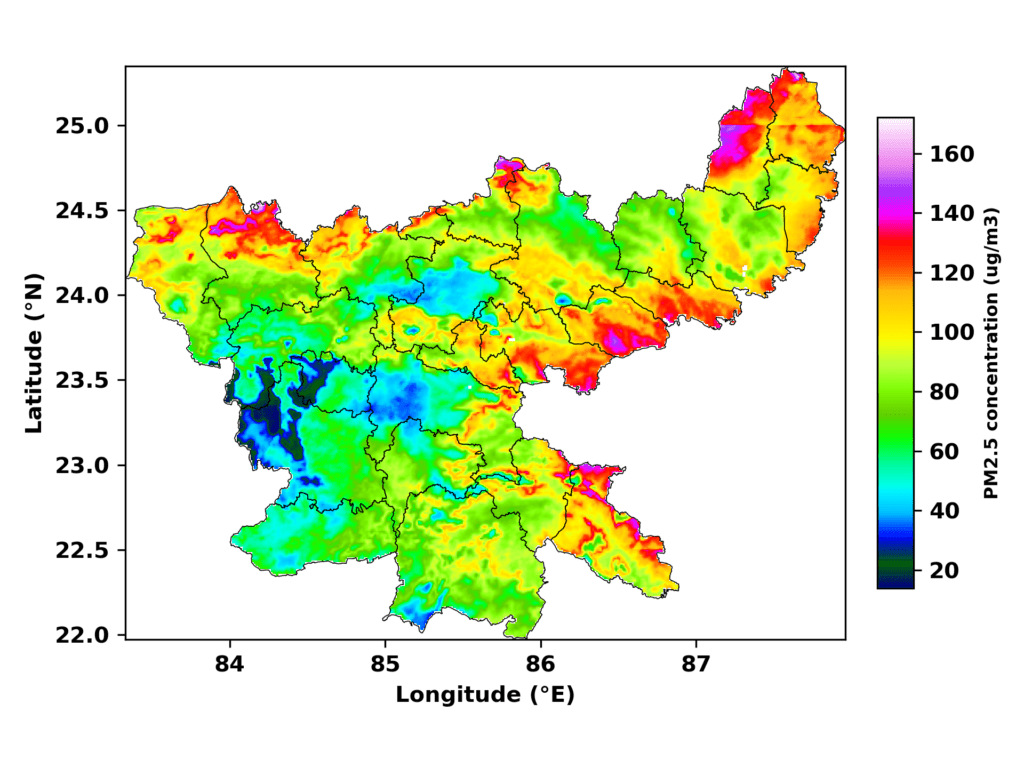
Fig: 4 PM2.5 concentration over Jharkhand December 2016 (Source:WU)
Government Initiatives for Air Quality Management
Under the National Clean Air Programme (NCAP) launched in 2019, 122 non-attainment cities were identified, with Dhanbad from Jharkhand being one of them. Thereafter, Ranchi and Jamshedpur were also included, in 2021. The program introduced in 2019 mandated these cities to create action plans aimed at reducing PM pollution levels by 20-30% by 2024, compared to 2017 levels. In 2022, the goal was adjusted to a more ambitious target of reducing PM pollution levels by 40% by 2026. The Jharkhand State Pollution Control Board (JSPCB) has taken significant steps to prepare a Comprehensive Clean Air Action Plan (CCAAP) in line with NCAP guidelines. This plan includes actions for improving air quality and overall development. JSPCB is actively monitoring air quality at various locations, and emission standards are enforced for industries. The state has also adopted Bharat Stage VI emission norms to reduce pollution from vehicles. With the implementation of the Vehicle Scrappage Policy 2023 and the Jharkhand Electric Vehicle Policy 2022, along with a strong vision towards comprehensive air pollution control, Jharkhand aims to significantly reduce vehicular emissions and promote the adoption of electric vehicles, contributing to cleaner and healthier air quality in the state.
Sustainable Urban Development in Jharkhand: A Pathway to Reducing Air Pollution
Jharkhand’s rapid urbanization presents both opportunities and challenges, especially concerning air pollution. Sustainable urban design and development offer effective solutions to mitigate urban air pollution and enhance the liveability of cities. Through scientifically-backed planning and policy measures, Jharkhand can address air quality issues that have emerged from industrial activities, vehicle emissions, and insufficient waste management. Below are key strategies, underpinned by data-driven insights, for sustainable urban development that can directly impact air quality in Jharkhand’s urban areas.
- Promote Public and Green Transportation: Expand and improve public transport to reduce private vehicle use and associated emissions. Supporting electric vehicles (EVs) and related infrastructure can further decrease urban NO2 and CO levels, with the potential to cut transport-related emissions by 25% by 2030.
- Develop Non-Motorized and Green Infrastructure: Invest in cycling and pedestrian pathways, and increase green spaces, which help absorb pollutants, reduce PM levels by 5-20%, and promote low-emission commuting. Urban green spaces can also improve air quality and offer thermal comfort to residents.
- Implement Efficient Waste and Energy Management: Effective waste management practices, including composting and recycling, could reduce emissions from waste by up to 60%. Adopting energy-efficient buildings and renewable energy sources, like solar, can cut city-level energy demands by 15-25% and decrease CO2 emissions by 0.4 million metric tons annually.
- Strengthen Industrial Regulations and Regional Collaboration: Enforce strict environmental standards in industries to curb sulfur dioxide and particulate emissions, aligning with NCAP’s pollution reduction targets. Regional collaboration can also address cross-border pollution from sources like crop burning and industrial emissions in neighbouring states.
- Advance Monitoring, Public Awareness, and Research: Expand air quality monitoring across cities to target pollution hotspots effectively. Educating the public on sustainable practices and supporting research and innovation in pollution control technologies can further reduce pollution by up to 10% by 2035.
Way forward
In line with World Cities Day 2024’s theme, “Youth Leading Climate and Local Action for Cities,” Jharkhand’s young generation stands as a powerful catalyst for change in the journey toward sustainable urban development. By championing green initiatives like improved public transit, pedestrian-friendly spaces, and urban reforestation, they are not only addressing air pollution but also reshaping cities into cleaner, healthier, and more resilient spaces. Whether it’s through grassroots awareness campaigns, innovative green tech, or partnerships for sustainable policies, Jharkhand’s youth are stepping up to lead local climate action, proving that sustainable urban growth is not only possible but achievable with collective community-driven efforts. In their hands lies the power to turn Jharkhand’s urban areas into vibrant, eco-conscious cities, setting an inspiring example for others and aligning closely with global sustainability goals. As young people shape Jharkhand’s urban landscape, they are not just building better cities for today but laying the groundwork for a cleaner, healthier future.
References
Balakrishnan, K., Dey, S., Gupta, T., Dhaliwal, R. S., Brauer, M., Cohen, A. J., … & Dandona, L. (2019). The impact of air pollution on deaths, disease burden, and life expectancy across the states of India: The Global Burden of Disease Study 2017. Lancet Planet Heal 3: e26–e39.
Burden of Disease Attributable to Major Air Pollution Sources in India: GBD MAPS Working Group
CSTEP. (2023). Air Pollution Emission Inventory for Six Cities in Jharkhand (CSTEP-RR-2023-5)
Duh, J. D., Shandas, V., Chang, H., & George, L. A. (2008). Rates of urbanisation and the resiliency of air and water quality. Science of the total environment, 400(1-3), 238-256.
Health and economic impact of air pollution in the states of India: The Global Burden of Disease Study, 2019
https://airly.org/en/the-role-of-urban-planning-and-design-in-improving-air-quality/#:~:text=Designing%20green%20roofs%2C%20green%20walls,transport%20to%20reduce%20vehicular%20emissions.
https://en.wikipedia.org/wiki/Sustainable_Development_Goal_11
Imam, A. U., & Banerjee, U. K. (2016). Urbanisation and greening of Indian cities: Problems, practices, and policies. Ambio, 45, 442-457.
Jharkhand State Pollution Control Board. (2021). Comprehensive Clean Air Action Plan Ranchi. https://cpcb.nic.in/Actionplan/Jamshedpur.pdf
Krishna, A. P., & MITRA, S. K. (2030). Geoinformatics Based Environmental Quality Assessment of Physical Parameters of Urbanization: Case Study of Ranchi City. World, 700(33.00), 40.
Sarwar, F., Divyarani Vaishnav, P., & Khan, M. M. A. (2017). Urbanization, poverty and health status: A case study of urban Jharkhand. NEWMAN.
Shrivastava, M., Ghosh, A., Bhattacharyya, R., & Singh, S. D. (2018). Urban pollution in India. Urban pollution: Science and Management, 341-356.
Towards cleaner air for a billion Indians: Joshua S. Apte and Pallavi Pant (2019)
Statista. (2023). Largest cities in India 2023.
CIA World Factbook. (2023).
United Nations, Department of Economic and Social Affairs (UN-DESA). (2012). World Urbanization Prospects.
